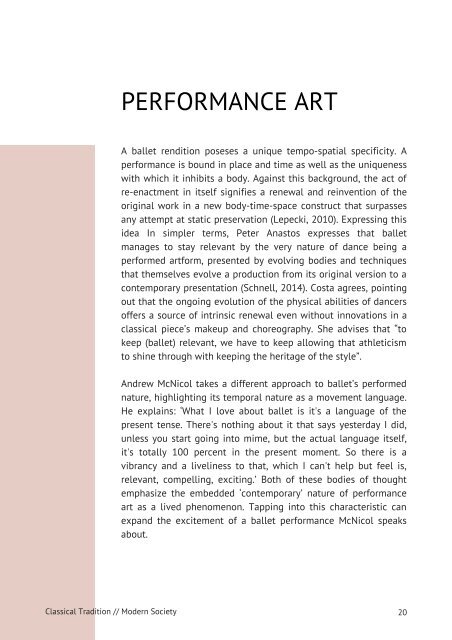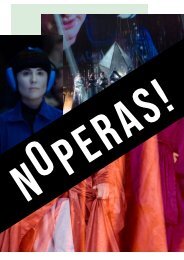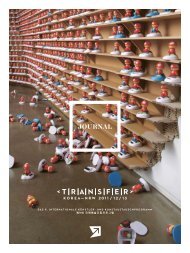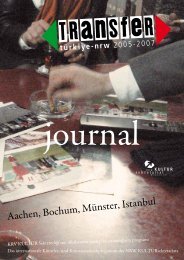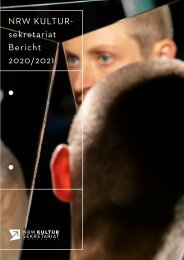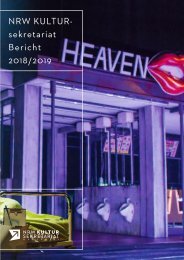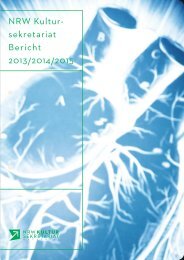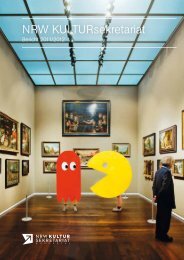Tanzrecherche NRW: Classical Tradition / Modern Society by Mirjam Otten
A handbook for creators and decision-makers on keeping classical ballet relevant
A handbook for creators and decision-makers on keeping classical ballet relevant
Create successful ePaper yourself
Turn your PDF publications into a flip-book with our unique Google optimized e-Paper software.
PERFORMANCE ART<br />
A ballet rendition poseses a unique tempo-spatial specificity. A<br />
performance is bound in place and time as well as the uniqueness<br />
with which it inhibits a body. Against this background, the act of<br />
re-enactment in itself signifies a renewal and reinvention of the<br />
original work in a new body-time-space construct that surpasses<br />
any attempt at static preservation (Lepecki, 2010). Expressing this<br />
idea In simpler terms, Peter Anastos expresses that ballet<br />
manages to stay relevant <strong>by</strong> the very nature of dance being a<br />
performed artform, presented <strong>by</strong> evolving bodies and techniques<br />
that themselves evolve a production from its original version to a<br />
contemporary presentation (Schnell, 2014). Costa agrees, pointing<br />
out that the ongoing evolution of the physical abilities of dancers<br />
offers a source of intrinsic renewal even without innovations in a<br />
classical piece’s makeup and choreography. She advises that “to<br />
keep (ballet) relevant, we have to keep allowing that athleticism<br />
to shine through with keeping the heritage of the style”.<br />
Andrew McNicol takes a different approach to ballet’s performed<br />
nature, highlighting its temporal nature as a movement language.<br />
He explains: ‘What I love about ballet is it's a language of the<br />
present tense. There's nothing about it that says yesterday I did,<br />
unless you start going into mime, but the actual language itself,<br />
it's totally 100 percent in the present moment. So there is a<br />
vibrancy and a liveliness to that, which I can't help but feel is,<br />
relevant, compelling, exciting.’ Both of these bodies of thought<br />
emphasize the embedded ‘contemporary’ nature of performance<br />
art as a lived phenomenon. Tapping into this characteristic can<br />
expand the excitement of a ballet performance McNicol speaks<br />
about.<br />
<strong>Classical</strong> <strong>Tradition</strong> // <strong>Modern</strong> <strong>Society</strong> 20


